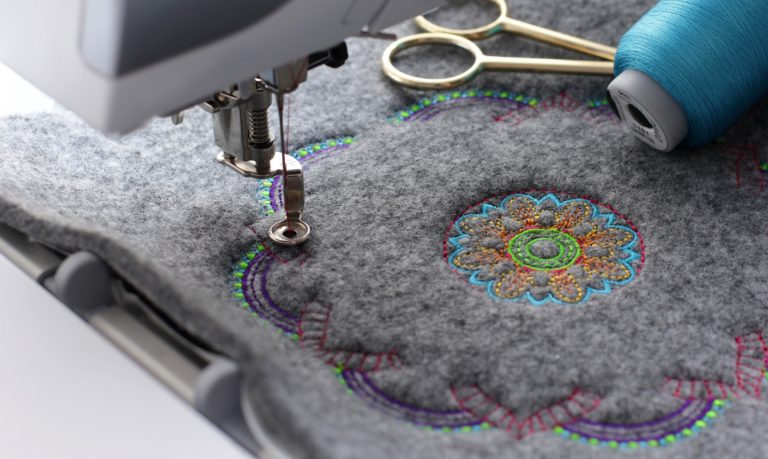Custom-made Digitizing for Embroidery: Tailored to Your Requirements
Wiki Article
Understanding the Embroidery Digitizing Process: Your Ultimate Guide
Needlework digitizing is a meticulous craft that calls for accuracy and proficiency to translate complex styles right into digital formats for equipment needlework. As artisans start this trip to grasp the embroidery digitizing procedure, a detailed understanding of the basics establishes the structure for quality. Past the rudimentary understanding exists a world of sophisticated software program, specialized devices, and nuanced strategies waiting to be explored. By delving right into the nuances of digitizing, one can unlock a world of innovative opportunities and raise their embroidery jobs to brand-new elevations.
Recognizing Embroidery Digitizing Essentials
Embroidery digitizing essentials develop the foundation whereupon complex layouts are equated into machine-readable formats for exact sewing. This first action in the embroidery digitizing procedure is vital for guaranteeing that the final stitched item is a devoted depiction of the original design. Comprehending needlework digitizing fundamentals entails grasping key principles such as stitch kinds, sew instructions, thickness, underlay, and draw payment.Stitch kinds play a crucial role in establishing the aesthetic and textural outcome of the embroidered layout. By selecting the proper stitch type, whether it be satin, fill, or running stitch, digitizers can attain the preferred result and boost the total high quality of the embroidery. Furthermore, sew direction affects the flow and measurement of the layout, while thickness identifies the spacing and protection of the stitches.
In addition, rug stitching offers security to the design by safeguarding the material and protecting against distortion throughout the needlework process. Pull compensation is one more important consideration to combat the natural propensity of fabric to contract when sewn. Mastering these embroidery digitizing fundamentals is essential for producing professional-quality stitched products.
Choosing the Right Digitizing Software Program
Selecting the suitable digitizing software program is an essential decision that significantly influences the effectiveness and top quality of the embroidery digitizing procedure. Digitizing for Embroidery. When selecting the ideal digitizing software program, it is important to take into consideration elements such as the intricacy of layouts you plan to produce, the user-friendliness of the software program, the degree of client support used, and the compatibility with your needlework equipmentThere are numerous digitizing software options available on the market, varying from standard programs for newbies to innovative software application for professional digitizers. Some preferred options include Wilcom EmbroideryStudio, Hatch Embroidery Software Program, and PulseID. These software supply a variety of devices and attributes to help you develop intricate styles with simplicity.
Before choosing, it is a good idea to check out the different software alternatives with free tests or demonstrations to determine which one finest suits your requirements. Additionally, reading evaluations and looking for suggestions from experienced digitizers can offer useful insights right into the toughness and weaknesses of each software application bundle (Digitizing for Embroidery). By very carefully reviewing your requirements and contrasting the features of different digitizing software application, you can make an educated selection that boosts your needlework digitizing operations
Digitizing Tools and Methods

Optimizing Layout Settings for Embroidery
Understanding the intricacies of style settings is basic in accomplishing optimal results in the embroidery digitizing procedure, building upon the foundation laid by understanding digitizing tools and strategies. When enhancing style settings for embroidery, it is important to consider variables such as stitch kind, density, underlay, draw payment, and enrollment. Sew kind choice influences the general feel and look of the style, with choices like satin, fill, and running stitches using different textures and results. Density refers to the spacing and thickness of stitches, impacting the style's insurance coverage and sturdiness. Appropriate padding stitching provides stability and avoids textile distortion, particularly for complicated layouts or on stretchy materials. Pull settlement readjusts for fabric stretch during sewing, making sure precise design replication. Enrollment setups line up different aspects of the style precisely, keeping total style honesty. By fine-tuning these design setups, embroiderers can improve the high quality and accuracy of their stitched developments.
Troubleshooting Common Digitizing Issues
When coming across usual digitizing problems throughout the needlework process, it is necessary to understand the origin creates and implement effective remedies immediately. One typical trouble is stitch thickness problems, where stitches might be also dense, causing the material to pucker, or as well sparse, causing gaps in the design. try here Adjusting the stitch density settings in the digitizing software can help settle this issue.Another frequent challenge is thread breaks throughout the embroidery procedure. This can happen as a result of numerous factors such as wrong tension settings, dull needles, or using low-quality thread. Making certain proper maintenance of the needlework device, including normal needle modifications and stress modifications, can reduce the occurrence of thread breaks.
In addition, style enrollment errors can cause misaligned components within the needlework layout. Inspecting the style positioning in the digitizing software application and making needed changes prior to stitching can assist in avoiding this problem. By dealing with these common digitizing problems immediately and effectively, you can guarantee a smoother needlework procedure and high-grade ended up items.
Verdict
To conclude, mastering the embroidery digitizing process needs a strong understanding of the basics, the best choice of software program, and understanding of devices and strategies. Maximizing More Info style settings and repairing typical digitizing concerns are essential action in ensuring high-grade needlework results. By adhering to these steps carefully, one can accomplish precision and performance in the digitizing procedure.Report this wiki page